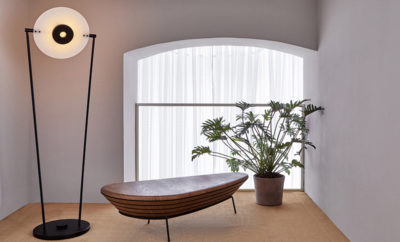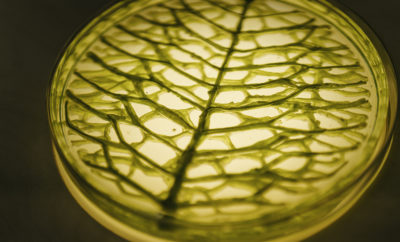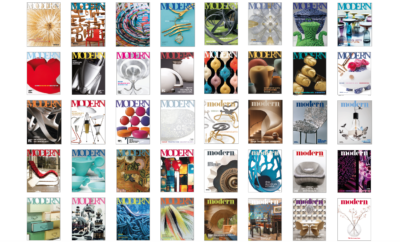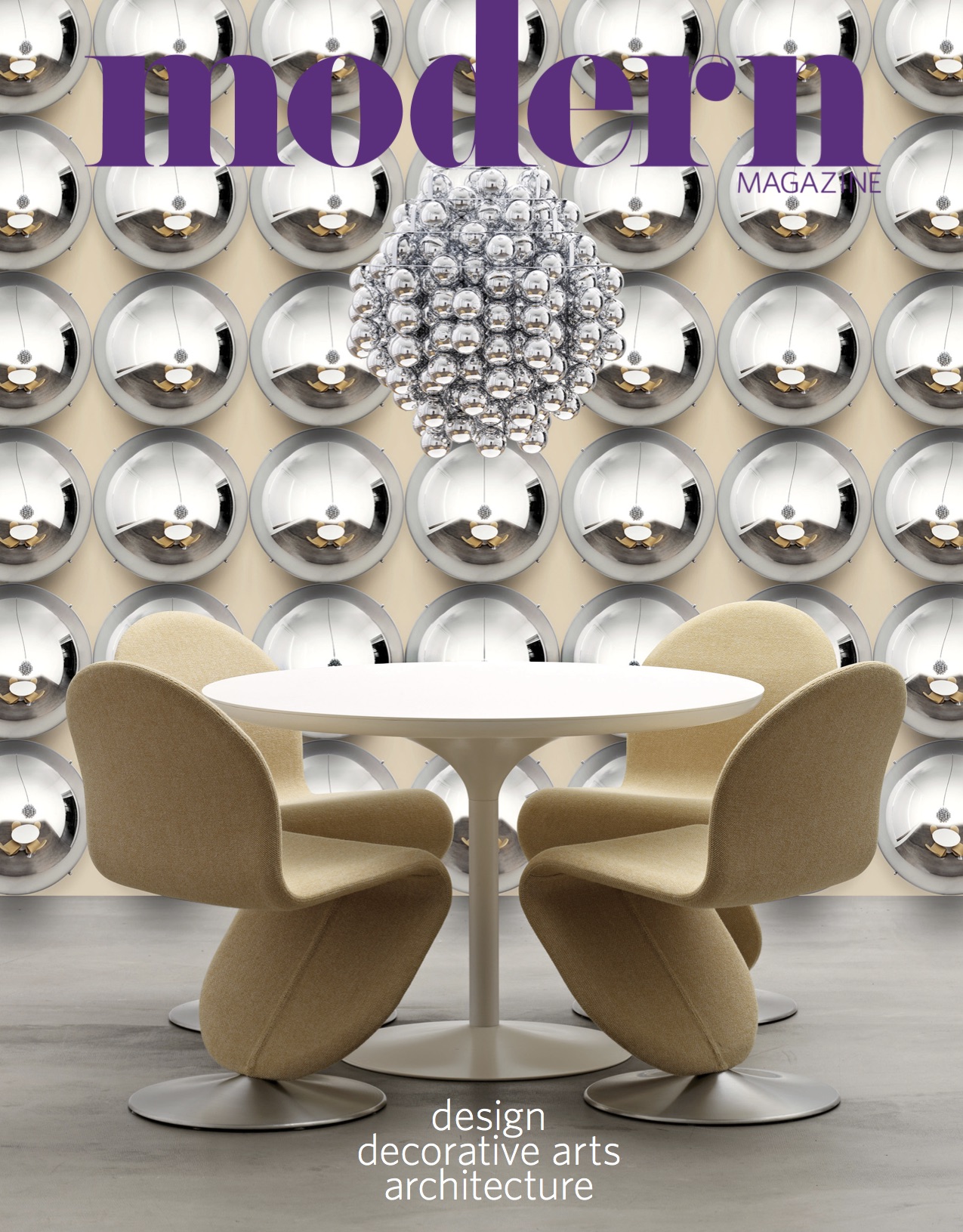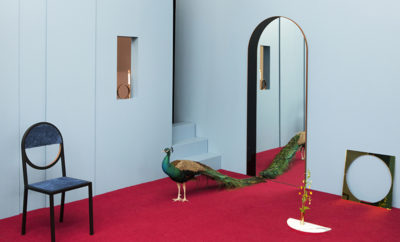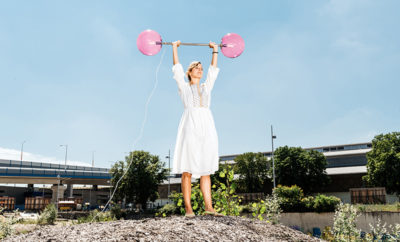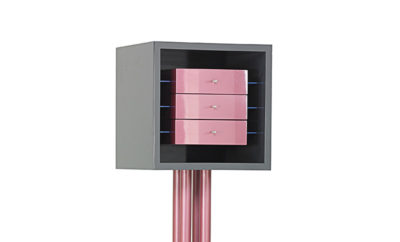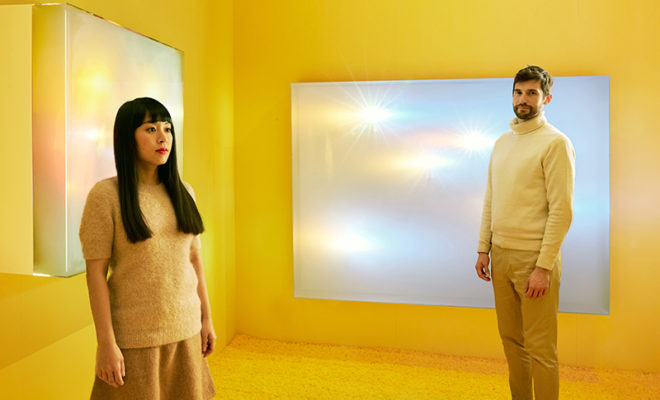 Studio Swine is helmed by Japanese architect Azusa Murakami (left) and British artist Alexander Groves (right). All images are courtesy of A/D/O.
Studio Swine is helmed by Japanese architect Azusa Murakami (left) and British artist Alexander Groves (right). All images are courtesy of A/D/O.
Design
Studio Swine: A Multimedia Design Practice Comes to NYC
Much of contemporary design straddles the line between decoration and fine art, but Studio Swine vaults the barriers to work in another dimension. The husband-and-wife partnership of Azusa Murakami and Alexander Groves explores space, place, and environment in experiential works that fit into no existing category. In its relatively short seven-year existence, the London-based art collective has made its mark as one of the most original creative teams in current practice, producing intriguing objects accompanied by films and installations that combine arresting visuals with environmentally conscious messages.
Their latest project, breaking new ground even for these innovators, was the outcome of a six-month residency at A/D/O, the creative space in Greenpoint, Brooklyn, founded by MINI (the iconic car brand conceived by British Motor Corporation’s research team, Amalgamated Drawing Office), that serves as workspace, special-events venue, and sponsor of unconventional artistic experiments.
Exhibited in A/D/O’s central hall in January, Wave. Particle. Duplex was a two-part site-specific work inspired by the changing environment and shifting light qualities of New York City. The restriction-free residency enabled the duo to work with unfamiliar mediums; as Alexander explains, “We wanted to work with plasma —the fourth state of matter after solid, liquid, and gas—and with neon.” The results of their experiments are seductive, immersive, and fascinating to experience.

Part of the couple’s Dawn Particles series.
In the first part, Dawn Particles, viewers entered a dense black space illuminated by pulsating lines and bursts of varicolored light emitted from snaking tubes of hand-blown glass mounted on matte aluminum panels. Magnetized plasma created the striking effect, with shifting currents that varied the illumination and undulating lines of color within the tubes. The work evoked the aurora borealis or streaks of lightning … a reminder of nature created with technology.
In the second part of the exhibit, Fog Paintings, two wall-mounted glass vitrines were filled with swirling fog, through which were seen slowly moving spots of neon light. Slowly changing hues as they moved, the lights suggested the arc of the sun or moon moving across the sky, recalling the light-capturing skill of Hudson River school painters. In one of the vitrines, prisms split light into different colors, rotating slowly to create rainbow effects.
For the presentation at A/D/O, Wave. Particle. Duplex was wrapped in flowing white curtains, enclosing viewers in an immersive experience with the art. To accompany the exhibition, Studio Swine made a documentary film in conjunction with A/D/O and MINI that explores the development of the exhibition and the experiences of their residency. Anyone who missed the exhibition can see an interview about it on YouTube.

Part of the couple’s Dawn Particles series.
The principals of Studio Swine are a balance of backgrounds and training. Japanese-born Azusa, 34, has an architecture degree from University College, London, and British-born Alexander, 35, studied art at the University of Oxford. They met in 2010 as graduate students at London’s Royal College of Art, where, in a class of some seventy-odd students, “we were the only design people,” Azusa says, “so it seemed natural for us to work together.” One thing led to another; they paired professionally to form Studio Swine (an acronym for Super Wide Interdisciplinary New Explorers) in 2011, and married in 2013. The partnership is clearly one of equals: “We don’t always agree,”she notes, “but we have a shared goal.” He agrees, saying, “We pursue different goals to the same end.”
Studio Swine projects draw inspiration from elements of nature and the challenges of the modern world. Their first project, Sea Chair (2012), was formed at sea from plastic detritus recovered in local fishermen’s nets, calling attention to the problems of waste disposal. Hair Highway (2014) viewed human hair in small objects as an alternative to scarce materials like tortoise shell or tropical woods. And Fordlandia (2016) made objects of Amazonian rubber, to encourage harvesting rubber instead of cutting rainforest trees. At the 2017 Salone del Mobile, New Spring was an ephemeral fantasy — a tree whose branches dropped fog-filled bubbles that could be held with special gloves but burst on contact with skin…a unique and photogenic temporary exhibit that left no waste. It was an internet sensation, and Azusa and Alexander became media darlings. (The fact that both are attractive and articulate hasn’t hurt.)

Murakami in front of a piece from Studio Swine’s exhibition Wave. Particle. Duplex.
What’s next for Studio Swine? Taken with the energy and variety of New York, they’re planning to relocate to the city, and are currently apartment-hunting in Brooklyn. As for work, after overseeing additional showings of Wave. Particle. Duplex, they’ll continue to explore new paths along the border between the natural and the artificial; “We think we’re at the tip of the iceberg of what we call tangible technology, says Alex. “We work on the boundary between disciplines.”


